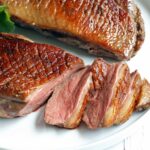
Seared Duck Breast Recipe
With beautifully browned skin, a nice layer of fat, and juicy meat, seared duck breast is a restaurant-level delicacy that's surprisingly easy to cook at home.
Servings 2 servings
Calories 458kcal
Ingredients
- 2 duck breasts 8 ounces each, boneless, skin-on
- 1 teaspoon Diamond Crystal kosher salt or ½ teaspoon of any other salt, including Morton kosher salt
- ½ teaspoon black pepper
- ¼ teaspoon garlic powder
For the Optional Sauce:
- 3 tablespoons dry red wine
- Pinch Diamond Crystal kosher salt
- Pinch black pepper
- 1 garlic clove minced
- 3 tablespoons unsalted butter
Instructions
- Remove the duck breasts from the fridge an hour before cooking. This is not mandatory, but it helps ensure the duck cooks evenly.2 duck breasts
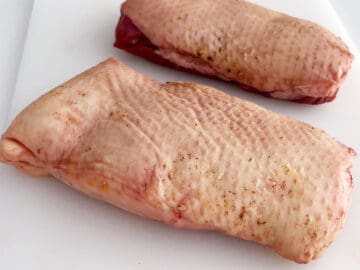
- With a sharp knife, gently score the skin in a tight but shallow diamond pattern, making sure not to nick the flesh. Keeping the cuts shallow will ensure there's some tasty fat left after cooking.
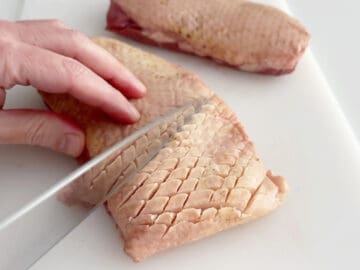
- Season the duck breasts with salt and pepper on both sides. Season the flesh side with garlic powder, too.1 teaspoon Diamond Crystal kosher salt, ½ teaspoon black pepper, ¼ teaspoon garlic powder
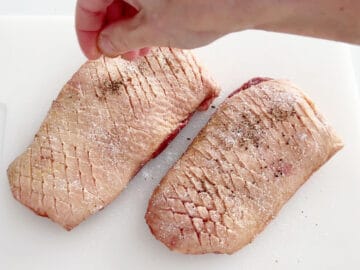
- Place the duck pieces, skin side down, in a large, cold skillet. I use a cast-iron skillet. There's no need to add oil to the pan. The duck will release plenty of fat as it cooks.
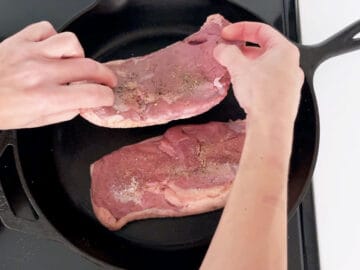
- Place a heavy, smaller skillet on top. This will help prevent the edges from curling and ensure the skin has full contact with the pan's surface.
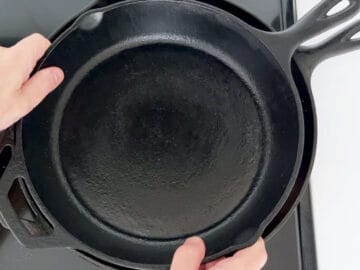
- Heat the pan over medium-low heat. After about 5 minutes, the fat should begin to render and gently bubble. Ensure the fat keeps its gentle bubble and adjust the heat accordingly. You don't want the fat to splatter, as that would mean the pan is too hot. But you also don't want it to go silent, because that would mean the pan is too cold.
- Cook the duck over medium-low heat until the skin is browned, about 15 minutes. Pour out the excess rendered fat 2-3 times throughout cooking. (See notes).
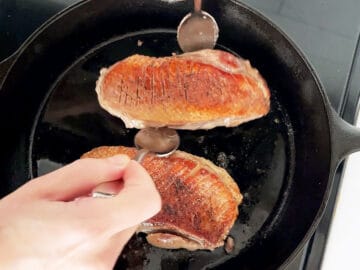
- Flip the duck pieces and cook the flesh side for 2 minutes, then cook the edges for about 30 seconds each.
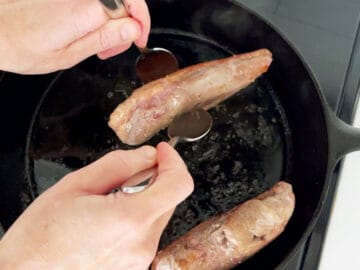
- Using an instant-read thermometer, check the internal temperature. For medium-rare, it should read 130°F. For medium, it should read 140°F.
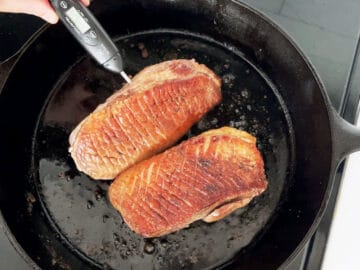
- Remove the duck from the pan and let it rest for ten minutes before slicing and serving.
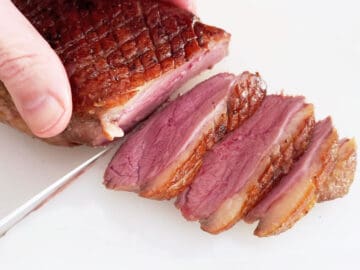
Optional Sauce:
- Once the duck is cooked and resting, pour the remaining fat out of the skillet. Add 3 tablespoons of dry red wine, increase the heat to medium, and use the wine to deglaze the bottom of the pan.3 tablespoons dry red wine

- Add salt and pepper to taste (I add a pinch of each) and one minced garlic clove. Cook over medium heat, stirring, for about 2 minutes to slightly reduce the wine and cook the garlic.Pinch Diamond Crystal kosher salt, Pinch black pepper, 1 garlic clove

- Add 3 tablespoons of unsalted butter and continue cooking for about 2 more minutes until the butter melts and the sauce thickens. Don't let the sauce boil to prevent it from separating - reduce the heat to medium-low or even low if needed.3 tablespoons unsalted butter

- Serve the sauce alongside the sliced duck.

Video
Notes
- Pour the rendered fat into a measuring cup, strain it, and save it in the fridge for later use, or discard it in the trash once it's cooled off. Don't pour it down the drain! It will clog your sink.
- The nutrition info is approximate and based on calorieking.com. It does not include the optional sauce.
- The USDA recommends cooking duck to an internal temperature of 165°F.
- You can keep the leftovers in an airtight container in the fridge for up to 4 days. Reheat them gently in the microwave at 50% power.
Nutrition
Serving: 1duck breast | Calories: 458kcal | Protein: 55g | Fat: 25g | Saturated Fat: 6g | Sodium: 560mg